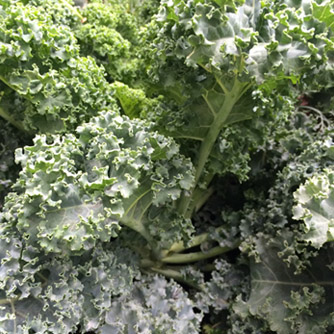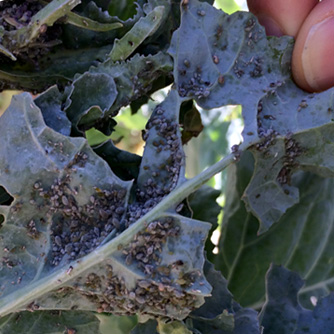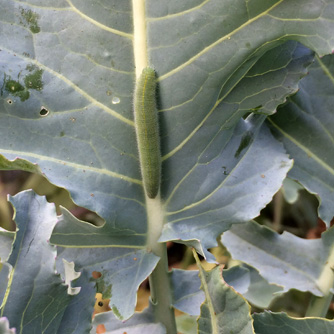Kale
BackKale has got to be the trendiest vegetable on the planet at the moment. Called a ‘super food’ because of its high level of nutrients (including vitamins A,B,C,E,K, iron, potassium, calcium, magnesium and more) it’s also packed with anti-oxidants that are known to be preventatives for many types of cancer. Kale is part of the cabbage family and can be used in soups, stews, risottos, salads, smoothies or as a steamed vegetable.
Kale is very versatile and can even be grown in pots for balconies or courtyards where you just pick the leaves as you need. There are many different types to grow which vary in size, leaf colour and shape including Tuscan Black, Red Russian and Blue Curl Scotch. The good news is that they all have the same growing requirements which makes things nice and easy.
How To Grow Kale
Choose a sunny spot and prepare the soil by adding plenty of organic compost. If growing during warm seasons or in warmer regions select a part shade position that is protected from hot afternoon sun. Sow seed directly into soil or in punnets where they’ll take about 5 days to germinate. To ensure a regular supply of kale allow 3-4 plants per person.
Apply OCP eco-seaweed weekly to assist with strong seedling development. Check seedlings regularly and water as required. You don’t want them drying out and dying on you!

Black Tuscan kale
Sowing Guide for Kale
Kale is traditionally a cool season vegetable sown in autumn. However it is surprisingly versatile and can be grown during warmer weather provided you keep the water up to it. In hotter weather it may never get as big before going to seed and it’s leaves can become a tad bitter ( but still highly nutritious). This will give extra bite to your salads but if you don’t like the stronger flavour use the leaves in soups and stews.
| Growing Zone | Sowing Time |
| Cool Zone | Autumn, Winter, Spring, Summer |
| Mediterranean Zones | Autumn, Winter, Spring |
| Warm & Temperate Frost Free Zones | Autumn, Winter, Spring , Summer |
| Tropical & Subtropical Zones | Autumn, Winter, Spring, Summer |

Blue Curl Scotch kale
Fertilising
Apply manure or certified organic fertiliser pellets at the start and then every 2-3 months. To really push more growth apply a mixture of OCP eco-aminogro and OCP eco-seaweed every 2-3 weeks and you will be rewarded with an ongoing supply of tasty leaves.
Harvesting
You can start harvesting leaves about 4-6 weeks after planting. Cut the outer leaves at their base, close to the main stem of the plant, and plants will continually sprout new leaves. Make sure you pick the leaves before they get too old and tough.
Fresh kale can be stored for about a week in the refrigerator.

Aphids on kale
Pests and Disease Problems for Kale
Kale does suffer from a few problems but don’t be put off as they’re easily controlled. Here are the common problems:
- Whitefly – spray with OCP eco-oil for easy control. There’s no withholding period so you can keep picking leaves even on the same day you spray.
- Mites and aphids - spray with a horticultural oil at the first sign of infestation.
- Caterpillars – both the white cabbage butterfly and cabbage moth will lay eggs on kale resulting in hungry caterpillars chomping through your leaves. Try growing the variety Red Russian which is attacked less frequently or spray with OCP eco-caterpillar killer.
- Powdery mildew -not as common but if it does take hold spray quickly with an organic fungicide to prevent it spreading further. Remove any old and yellowing leaves to ensure good air circulation around plants.
- Root-knot nematodes - the roots of kale plants can be attacked by nematodes which results in lumps and severe distortion. Plants exhibit poor growth above ground with yellowing foliage and wilting easily. Apply OCP eco-nemguard to the soil at planting time and reapply every 4-6 weeks. Boosting the level of organic matter in the soil (with compost and manures) along with crop rotation can also help reduce nematode numbers.

Caterpillar of the white cabbage butterfly on kale


